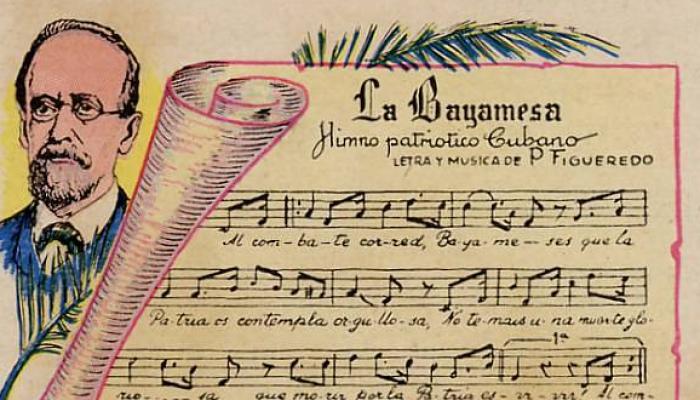Cubans celebrate Cuban Culture Day on Monday to commemorate October 20th, 1868, the date in which Cuba’s National Anthem was sung for the first time.
The Day of Cuban Culture also celebrates the date when the “mambi” or Cuban independence army under the command of Carlos Manuel de Céspedes freed the eastern city of Bayamo. Today "La Marseillaise" is, for men and women around the world, a march that calls for rebellion and freedom, inspiring freedom fighters from around the globe. Cubans also had their Marseillaise, on October 20th, 1868, to launch the first war of independence against Spanish colonial rule, which lasted ten years.
The history of the Cuban National Anthem dates back to August 13th, 1867, when the Revolutionary Committee of Bayamo met in the house of lawyer Pedro Figueredo, nicknamed "Perucho", to develop plans that should trigger the Cuban independence movement. In that meeting Figueredo himself thought of writing "our Marseillaise." In the morning of August 14th, Bayamo revolutionaries composed the melody that would become our national anthem. It was called "La Bayamesa" as an expression of its revolutionary nature and the place where national rebellion had started: Bayamo.
On May 8th, 1868, Figueredo asked musician Manuel Muñoz Cedeño to make the musical arrangement, an epical march that would distance itself from sacred hymns, it would have to urge people to struggle for the release of the country from Spanish colonial rule and to encourage patriotic feelings. On June 11th, 1868, Figueredo managed to play it on the church of Bayamo. On October 10th, the Revolution began, and on the 18th the Liberation Army of the Republic of Cuba began taking over Bayamo. On October 20th, the city was finally taken over by the insurgents after Spanish authorities surrendered at 11 pm. Fourteen months after the composition of the Cuban national anthem’s melody, more precisely on October 20th, 1868, Figueredo added the lyrics to it.
Amidst the euphoria of the rebel troops, mixed with the jubilant crowd, next to the Father of the Cuban Fatherland, Carlos Manuel de Céspedes, and other revolutionary leaders, and amidst cries requesting the lyrics of the march, Figueredo took pencil and paper and, crossing one leg over his horse’s saddle, he wrote the lyrics. It was copied and passed around from hand to hand. That was the place where it was first performed by all who had gathered in the square, thus giving rise to the national anthem of Cuba. Since then, its lyrics inspired all the actions of the independence movement and today it’s an expression of the patriotic nature of our people.
Related Articles
Commentaries
MAKE A COMMENT
All fields requiredMore Views
- Cuban delegation calls on rich countries at ECLAC to fulfill development aid
- New York doctor fired for rejecting Zionist propaganda, defending resistance
- Cubans to take part in Panamerican Junior Judo Cup
- Russian minister says BRICS to establish digital payment system for members
- Public health cooperation improves services in Pinar del Río


